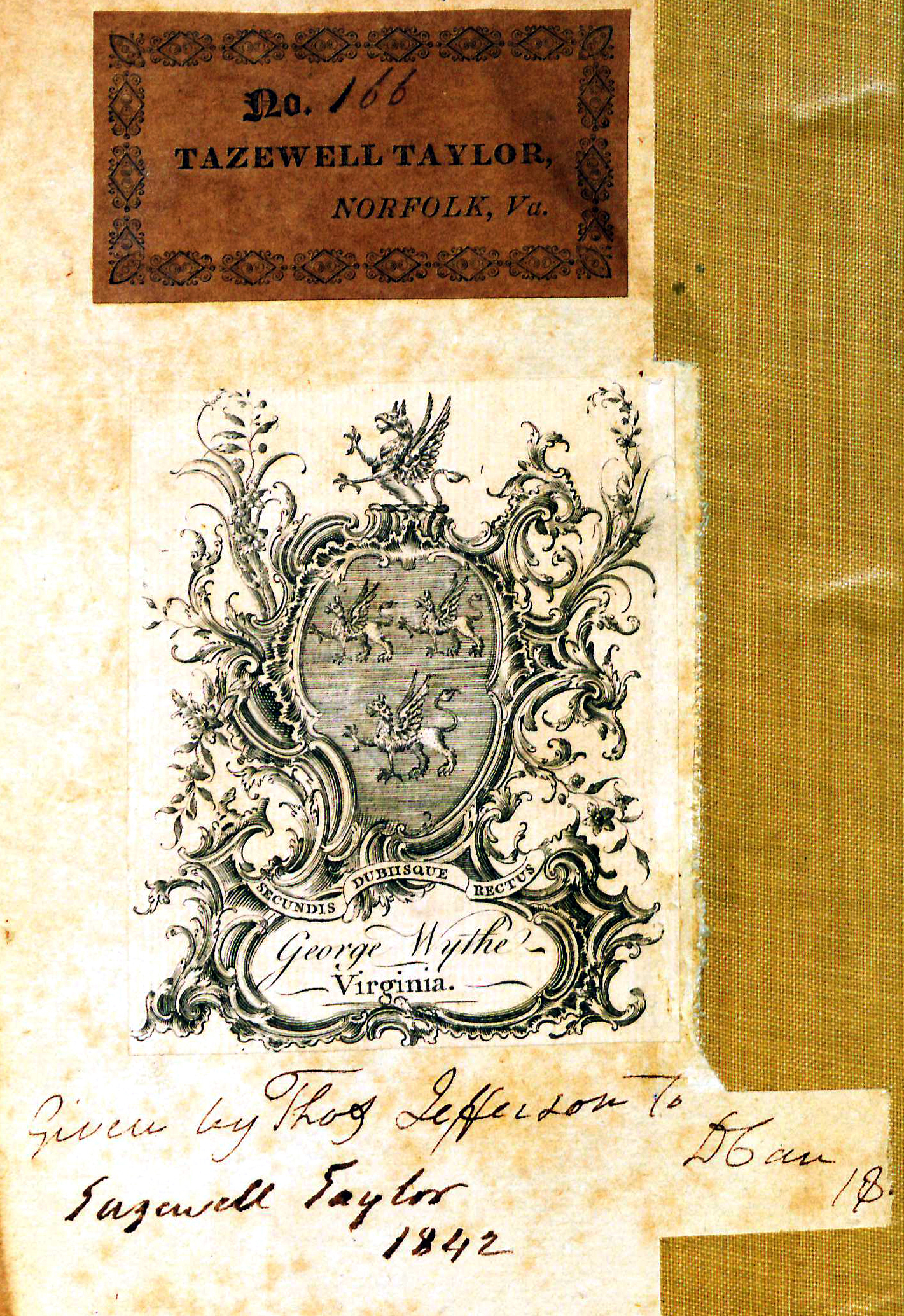George Wythe's bookplate
The Chippendale style, armorial bookplate[1] for George Wythe's personal library features a demi-griffin (a mythical beast with the head and wings of an eagle and the body of a lion) segreant on the crest and three griffins passant on the escutcheon. In heraldry, the griffin denotes strength, intelligence, courage and leadership. A family of Wythes from Suffolk, England, had a coat of arms with three golden griffins on a field of azure blue.[2] Coincidentally, the College of William and Mary chose the griffin as its mascot in 2010.
It is likely Wythe designed the bookplate himself,[3] having a plate made for him by an engraver, probably in London. Wythe did order, in 1768, an engraved copper plate for the making of bookplates for the library of the House of Burgesses of Virginia:
You will oblige me by sending a copper plate, with the arms of Virginia neatly engraved and some impressions of them to be pasted on the books belonging to the house of burgesses. If any additions are made on the plate in consequence of what is proposed within, I will cheerfully pay the extraordinary cost.[4]
The motto "Secondis Dubiisque Rectus" translates as "Upright in Prosperity and in Perils."[5] This was also the motto chosen by Sir William Blackstone for the commemorative rings given to the King, Lord Chancellor, and close friends and family to mark the occasion when he was called to the Coif: "I was called a Serjeant; the motto on my rings being, Secundis, dubiisque, rectus."[6]
Bookplates
Wythe's bookplate in volume 6 of The Reports of Sir Edward Coke (1738), George Wythe Collection, The Wolf Law Library, College of William & Mary, Williamsburg, Virginia.
Wythe's bookplate in volume 7 of The Reports of Sir Edward Coke (1738), Special Collections, Earl Gregg Swem Library, College of William & Mary, Williamsburg, Virginia.
References
- ↑ Charles Dexter Allen, American Book-plates: A Guide to Their Study with Examples (New York: Macmillan, 1905).
- ↑ W.J. Corbett and T. Tindal Methold, "The Rise and Devolution of the Manors in Hepworth, Suffolk," Proceedings of the Suffolk Institute of Archaeology and Natural History X (1900), 135.
- ↑ Alonso Thomas Dill, George Wythe: Teacher of Liberty (Williamsburg, Virginia: Virginia Independence Bicentennial Commission, 1979), 3.
- ↑ "[[Wythe to John Norton, 18 August 1768|George Wythe Letter to John Norton dated August 18, 1768]," Colonial Williamsburg Foundation, Rockefeller Library Special Collections, SCMS1936.3-0118.
- ↑ Dill, 3.
- ↑ Reports of Cases Determined in the Several Courts of Westminster-Hall, from 1746 to 1779 (London: S. Sweet, et al., 2nd ed., 1828), 681.


